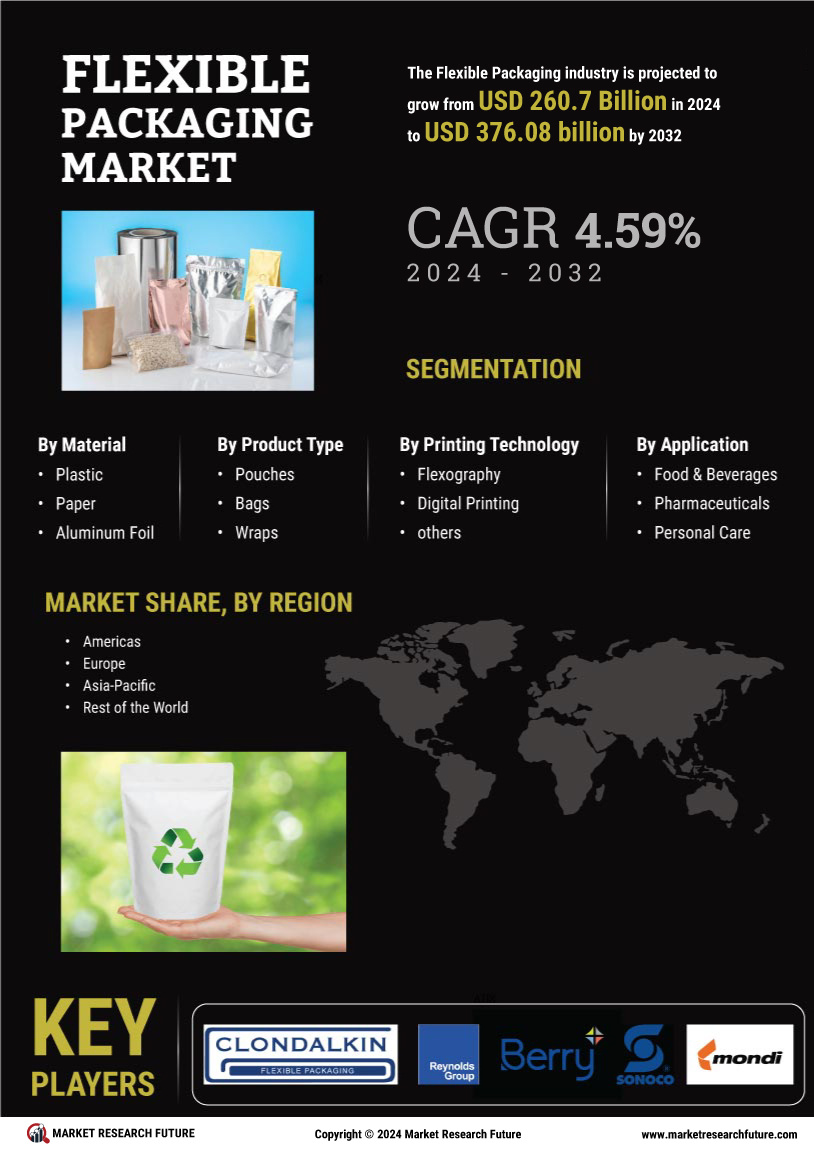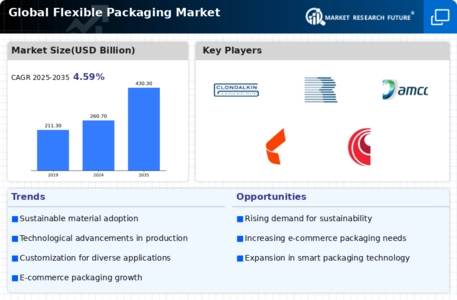E-commerce Growth
The rapid growth of e-commerce is a significant driver for the Flexible Packaging Market. As online shopping continues to expand, the demand for packaging solutions that ensure product safety during transit is increasing. Flexible packaging offers advantages such as lightweight materials and efficient space utilization, making it ideal for e-commerce applications. In 2025, the e-commerce sector is projected to account for a substantial portion of the flexible packaging market, with an estimated growth rate of 6% annually. This trend necessitates innovative packaging designs that can withstand the rigors of shipping while maintaining product integrity. Consequently, the Flexible Packaging Market is likely to evolve to meet the unique challenges posed by e-commerce logistics.
Regulatory Compliance
Regulatory compliance is an essential driver in the Flexible Packaging Market. Governments worldwide are implementing stricter regulations regarding packaging materials, particularly concerning food safety and environmental impact. Compliance with these regulations is crucial for companies aiming to maintain market access and consumer trust. In 2025, the market is expected to see a shift towards compliant packaging solutions, with an emphasis on materials that meet safety standards and sustainability criteria. This regulatory landscape is likely to spur innovation as companies seek to develop packaging that not only adheres to regulations but also enhances product appeal. As a result, the Flexible Packaging Market is positioned to grow in response to these evolving regulatory demands.
Sustainability Initiatives
The increasing emphasis on sustainability is a pivotal driver for the Flexible Packaging Market. Consumers are becoming more environmentally conscious, leading to a demand for eco-friendly packaging solutions. Companies are responding by adopting biodegradable and recyclable materials, which not only meet regulatory requirements but also appeal to eco-aware consumers. In 2025, the market for sustainable flexible packaging is projected to reach approximately 30 billion USD, indicating a robust growth trajectory. This shift towards sustainability is not merely a trend; it is becoming a fundamental aspect of corporate strategy. As businesses strive to reduce their carbon footprint, the Flexible Packaging Market is likely to witness innovations that prioritize environmental responsibility, thereby enhancing brand loyalty and consumer trust.
Technological Advancements
Technological advancements are significantly influencing the Flexible Packaging Market. Innovations in materials science and manufacturing processes are enabling the development of lighter, stronger, and more versatile packaging solutions. For instance, advancements in barrier technology enhance product shelf life while reducing material usage. The integration of smart packaging technologies, such as QR codes and NFC tags, is also gaining traction, allowing brands to engage consumers more effectively. In 2025, the market is expected to grow at a compound annual growth rate of around 5.5%, driven by these technological innovations. As companies invest in research and development, the Flexible Packaging Market is poised for transformative changes that could redefine packaging standards and consumer experiences.
Customization and Personalization
Customization and personalization are emerging as critical drivers in the Flexible Packaging Market. Brands are increasingly recognizing the value of tailored packaging solutions that resonate with specific consumer preferences. This trend is particularly evident in sectors such as food and beverage, where unique packaging designs can enhance product appeal. In 2025, the demand for personalized packaging is anticipated to contribute to a market growth of approximately 20% in certain segments. By leveraging data analytics and consumer insights, companies can create packaging that not only meets functional requirements but also aligns with individual consumer identities. This focus on customization is likely to foster deeper connections between brands and consumers, thereby enhancing brand loyalty and market share.

















Leave a Comment